When documentation mistakes happen, the costs can be steep: denied claims, billing delays, compliance risks, and even patient safety issues. In fact, documentation issues have been estimated to play a role in 10–20% of medical malpractice lawsuits, as reported in the Western Journal of Emergency Medicine.
For healthcare providers, one of the most effective ways to reduce these risks is by training your team—consistently and strategically.
Here’s why documentation matters so much, where mistakes usually occur, and how targeted training can prevent costly errors before they start.
Why Documentation Matters More Than Ever
Accurate clinical documentation is the foundation of patient care and revenue cycle management. A single charting error can trigger a chain reaction: a misfiled diagnosis, a denied claim, or a missed opportunity for timely treatment.
Consider this:
- Billing & Reimbursement: Payers rely on documentation to validate claims. If notes don’t support the services billed, claims can be delayed, denied, or recouped—even months after payment.
- Patient Safety: Missing or unclear notes can lead to repeat tests, medication errors, or missed diagnoses.
- Compliance: Regulatory bodies like CMS and The Joint Commission review documentation during audits and surveys. Gaps in records could result in penalties or loss of accreditation.
The Most Common Documentation Mistakes
Documentation mistakes happen for many reasons: time pressure, unclear workflows, EHR navigation issues, or lack of training. The good news? Most are preventable.
Here are a few common types of documentation mistakes:
- Missing Information: Omitting critical details like patient history, medications, or the rationale behind clinical decisions.
- Cloned or Copied Notes: Repeating the same note across visits, which can raise red flags with auditors.
- Improper Use of Templates: Over-relying on auto-populated fields without reviewing them for accuracy.
- Inconsistent Terminology: Using vague or nonstandard language that doesn’t match coding or clinical expectations.
- Late Entries: Waiting too long to document can lead to inaccuracies or forgotten details.
- Non-Compliant Language: Phrases that suggest uncertainty, like “appears to be,” can impact the credibility of the record.
What You Should Include in Your Documentation Training Program
Documentation quality is not just about individual effort—it’s about team-wide consistency. Training your staff ensures that everyone understands what accurate, complete documentation looks like, and how to achieve it consistently.
Here’s what a good documentation training program should include:
1. Foundational Knowledge
Every team member—whether clinical or administrative—should understand the purpose of documentation. Training should cover:
- The legal, clinical, and financial implications of documentation
- The role of documentation in patient safety and care continuity
2. Role-Specific Guidelines
A one-size-fits-all approach won’t work. Training should be tailored to each role’s documentation responsibilities:
- Physicians and NPs: Emphasize clinical justification, exam details, and linking documentation to medical necessity.
- Nurses: Focus on real-time patient monitoring, medication administration, and handoff accuracy.
- Front Office Staff: Reinforce the importance of capturing accurate demographics, insurance data, and appointment notes.
- Coders and Billers: Ensure understanding of coding rules, DRGs, modifiers, and payer documentation requirements.
3. Real-Life Scenarios and Practice
The best training is practical. Use real-world examples, case studies, and mock scenarios to help staff spot and correct documentation issues.
- Simulate a denied claim and walk through the documentation that could have prevented it.
- Practice writing notes with commonly missed components.
- Review actual documentation excerpts (anonymized) and discuss how they could be improved.
4. Ongoing Audits and Feedback
Training shouldn’t be a one-time event. Integrate it into your workflow by reviewing documentation regularly and offering constructive feedback.
- Conduct periodic audits of clinical notes and billing documentation.
- Share anonymized “good” and “needs improvement” examples during team meetings.
- Encourage a learning culture where staff feels supported, not punished, for improving.
5. Technology Training
Many documentation mistakes stem from not knowing how to fully use the EHR system. Offer refreshers and tips on:
- Navigating templates and smart phrases properly
- Using auto-fill features without copying errors
- Entering information in the correct fields to ensure visibility and retrieval
The ROI of Better Documentation

Still wondering if it’s worth the investment?
Here’s what you gain when your team is trained to document effectively:
- Fewer Denials: Clean documentation supports accurate coding and billing, reducing claim rejections.
- Faster Reimbursement: Proper documentation minimizes back-and-forth with payers and accelerates payment cycles.
- Improved Patient Outcomes: Clear records enhance care coordination, especially for patients with complex conditions.
- Stronger Compliance: Auditors find fewer issues, reducing your risk of penalties or repayment demands.
- Better Staff Morale: When teams are confident in what’s expected, they’re less stressed and more productive.
Getting Started: Simple Steps for Healthcare Leaders to Avoid Documentation Mistakes
Ready to improve documentation across your practice? Here’s where to start:
1. Assess Current Documentation Quality
- Review recent claims, EHR notes, and compliance reports.
- Identify recurring errors or trends.
2. Schedule a Team Training Session
- Focus on high-impact topics and common mistakes.
- Consider bringing in a third-party training partner for objectivity.
3. Create a Documentation Resource Hub
- Offer cheat sheets, checklists, and recorded trainings.
- Include role-specific tips for easy reference.
4. Appoint Documentation Champions
- Choose staff in each department to reinforce best practices and share updates.
5. Track and Celebrate Improvements
- Use audit results to measure progress.
- Recognize teams or individuals who show improvement.
Final Thoughts: Documentation Is Everyone’s Job
You don’t need perfection—you need consistency. When every team member understands their role in documentation and feels confident in their skills, the ripple effects benefit your entire organization. From billing and compliance to patient care and staff satisfaction, strong documentation training delivers measurable results. And it starts with leadership setting the tone.
Ready to reduce errors, stay compliant, and strengthen patient trust—all while working more efficiently? Enroll your team in our free, customized documentation training program today. We’ll help you build a course tailored to your practice’s unique needs—at no cost.
Train your team. Document better. Thrive.



